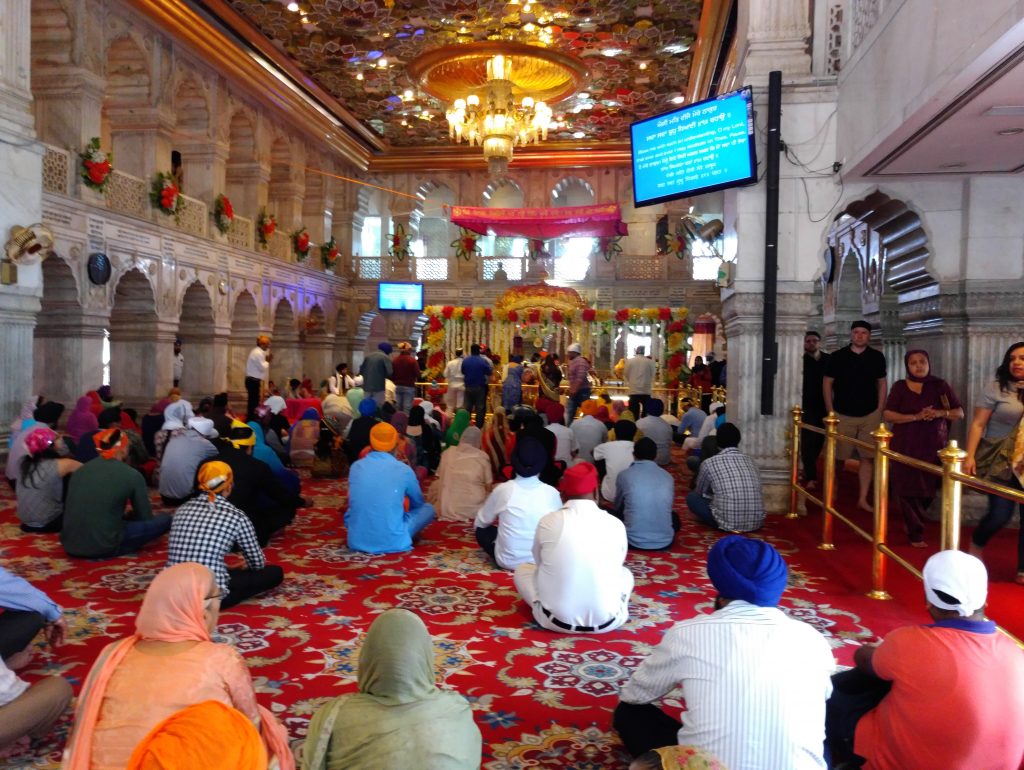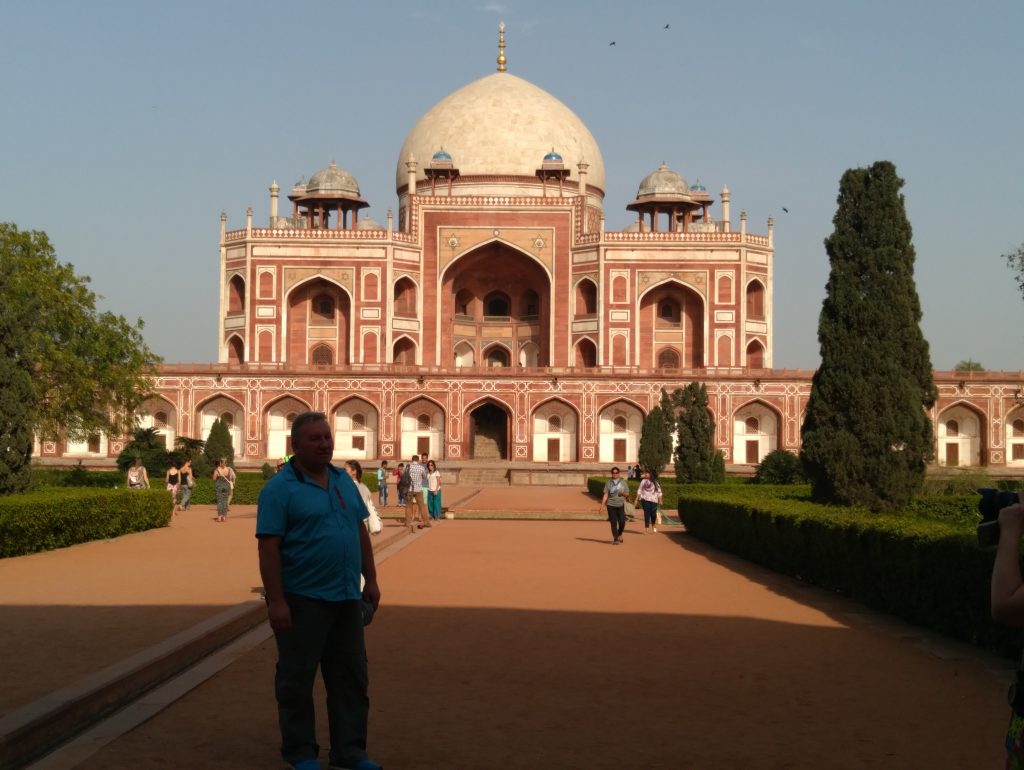This is the first in a series of blogs about my recent trip to India with the University of Chicago Civic Leadership Academy. It’s taken me some time to simply digest everything that we saw and experienced, and to think through the “big themes” and how those themes either relate to Civic Engagement in Chicago. Today’s discussion will focus on the “Array of Themes” that India kindles and I’ll share a few early highlights of our visits so you can see the diversity of the country.
Future blogs will focus on a few of the inspiring leaders we visited, and how their leadership skills can be translated to the challenges here in Chicago.
Let’s start with a quote which graces the wall of the Microsoft Delhi office which I visited on my second to last day in India. We’ll talk more about the office at a later time, but I felt this was a great summary of the values of every leader and every place we visited:
In Sanskrit:
Vipadi dhairyam atha abhyudaye kshamaa sadasi vaakpatutaa yudhi vikramaha
Yashasi cha abhiratihi vyasanam shrutau prakriti siddham idam hi mahaatmanaamIn English :
Courage in trouble, forbearance in prosperity, eloquence in the assembly, valour in battle, eagerness in gaining fame, attention to the holy scriptures – all these are natural to great ones.
Over the course of the trip, several themes emerged and are summed up by a comment from Rashish Nanda, the Chief Executive Office of the Aga Khan Trust for Culture, India: “India lives in many centuries at the same time”. How perfectly this helps describe the beauty, the cultural mash-up, the digitization of India living right next to extreme poverty. Each morning we started our program at the modern campus of the University of Chicago Center in Delhi. We met with noted senior executives and NGO leaders who fought for change and human rights.

Following are the themes that I observed during our visit:
- The scale of the challenges in India are massive. Delhi has nearly 20 million people and the scope of trying to impact that range of people is enormous. I found the leaders we met tackled their challenges “one person at a time”, always moving forward and the scope didn’t diminish their energy or optimism.
- Women’s rights are also a key issue and the mountain that the NGO female leaders climbed were clearly higher than for male NGO leaders. Which made the impact and the focus of the women we met with all the more impressive. We’ll hear more about Ruma Roka, Founder and Chief Executive, Noida Deaf Society in a future blog.
- Society itself is in a self-discovery process. It’s both evolving to catch up with the 21st Century and keeping true to its heritage and culture at the same time. Think about Chicago, “born” in 1837 and how we are building a global tech hub. Now think about Delhi: The Indian capital city of Delhi has a long history, and has been an important political center of India as the capital of several empires. Much of Delhi’s ancient history finds no record and this may be regarded as a lost period of its history. Extensive coverage of Delhi’s history begins with the onset of the Delhi Sultanate in the 12th century. Since then, Delhi has been the center of a succession of mighty empires and powerful kingdoms, making Delhi one of the longest serving Capitals and one of the oldest inhabited cities in the world.
- The sounds! The senses! The colors! The creative expression! India expresses its cultural heritage through dress, colors, spices, deep faith and horns honking. The call to worship, the vibrant colors literally everywhere and the constant collision of 21st Century traffic with people selling their wares as they have been sold for generations. The presence of TV screens at the magnificent Golden Temple is a great example.
- Leadership is everywhere in India. It’s with the mother who is changing her child’s life through sending her to the School for the Deaf. It’s with the engineers and scientists who focus on toxic waste and work tirelessly to change policies to improve the health of the country. It’s with the Foundation leaders who focus on preserving the green space and the heritage of Humayun’s Tomb through an urban renewal initiative, similar to the urban renewal in Bronzeville, Englewood or along 63rd Street.
The leaders we met with put the spark of human dignity back into people who had been defeated by life. They were faced with leading across boundaries (ethnic, caste, government/private sector). They faced challenges of public sectors everywhere: how do you motivate and energize bureaucracy? How do you battle corruption? How do you do urban planning in a geography that originally had 50,000 citizens and now has nearly 20 million people to house, feed, and educate. They face the challenges of managing multiple stakeholders (imagine the challenges of restoration, culture and funding for Humayun’s Tomb! But then again, Humayun managed to be buried with both of his wives….). The leaders we met with felt that community ownership was key to success (sound familiar, Chicago?). Leadership qualities include the ability to look deeper and create customized solutions, being nimble, being analytical and using data to evaluate success through pre and post assessment, and above all, being passionate.
In our next blog, we’ll learn more about the remarkable Noida Deaf Society and how one women literally brought children who had no education nor means of communication into a school, where those children are now the teachers.



